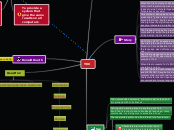TEX
Story
When the first volume of Donald Knuth's The Art of Computer Programming was published in 1969, it was typeset using hot metal typesetting set by a Monotype Corporation typecaster.
This method, dating back to the 19th century, produced a "good classic style" appreciated by Knuth. Around that time, Knuth saw for the first time the output of a high-quality digital typesetting system, and became interested in digital typography.
The disappointing galley proofs gave him the final motivation to solve the problem at hand once and for all by designing his own typesetting system.
On 13 May 1977, he wrote a memo to himself describing the basic features of TeX. He planned to finish it on his sabbatical in 1978, but as it happened the language was not frozen until 1989, more than ten years later.
Guy Steele happened to be at Stanford during the summer of 1978, when Knuth was developing his first version of TeX.
When Steele rewrote TeX's I/O to run under the ITS operating system.
In 1989, Donald Knuth released new versions of TeX and METAFONT. Despite his desire to keep the program stable, Knuth realised that 128 different characters for the text input were not enough to accommodate foreign languages.
Use
TeX commands commonly start with a backslash and are grouped with curly braces.
TeX input is hard to parse by anything but TeX itself.TeX is a macro and tokenbased language: many commands, including most userdefined ones.
The read-write system can be divided into four levels:
Characters are read from the input file and assigned a category code
Expandable control sequences are replaced by their replacement text.
The stream of characters get assembled into a paragraph.
It breaks the vertical list of lines and other material into pages.
[FYI]Best video ever
Donald Knuth
Designed and mostly written and released in 1978
Used for:
Complex Mathematical Formulae
Digital Typographical
Academia
Economics
Science
Engineering
Physics
Statistics
Quantitative psychology
